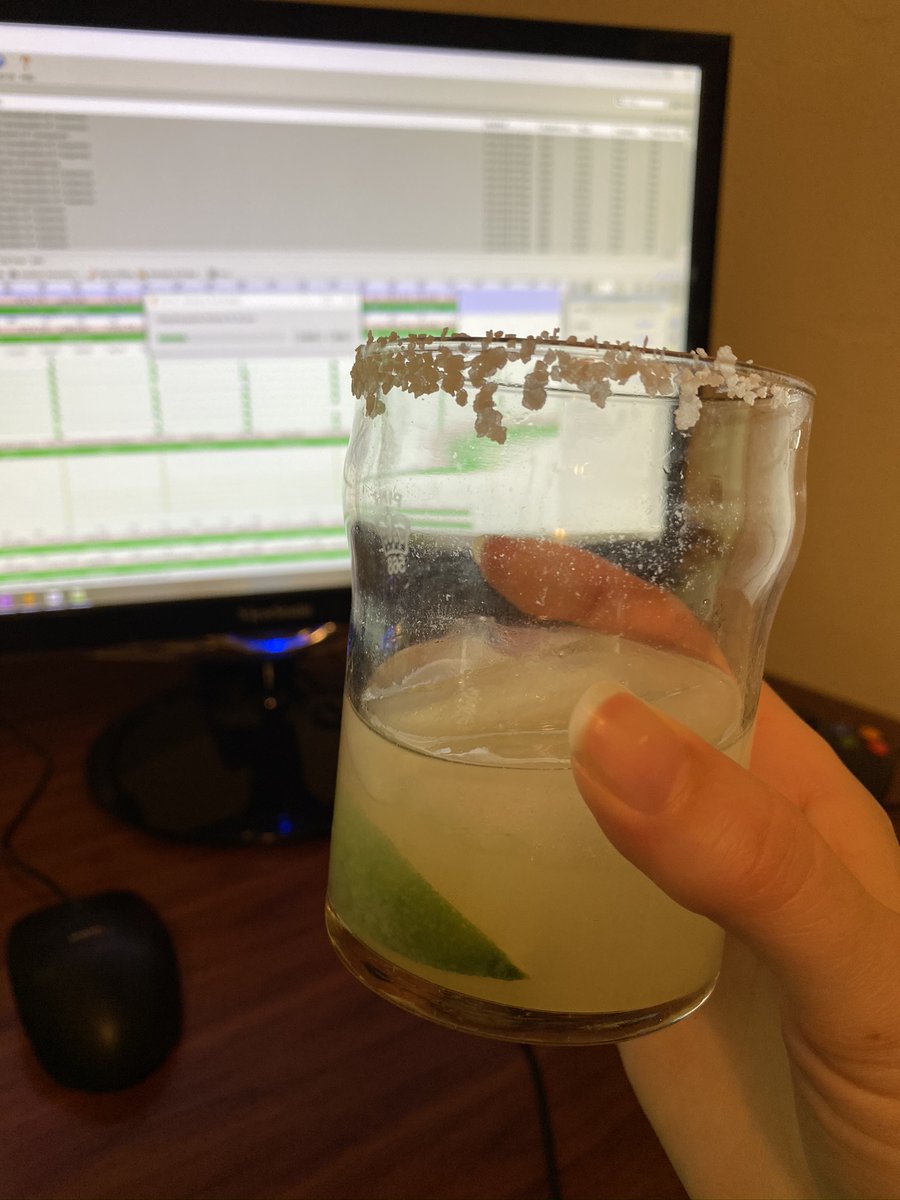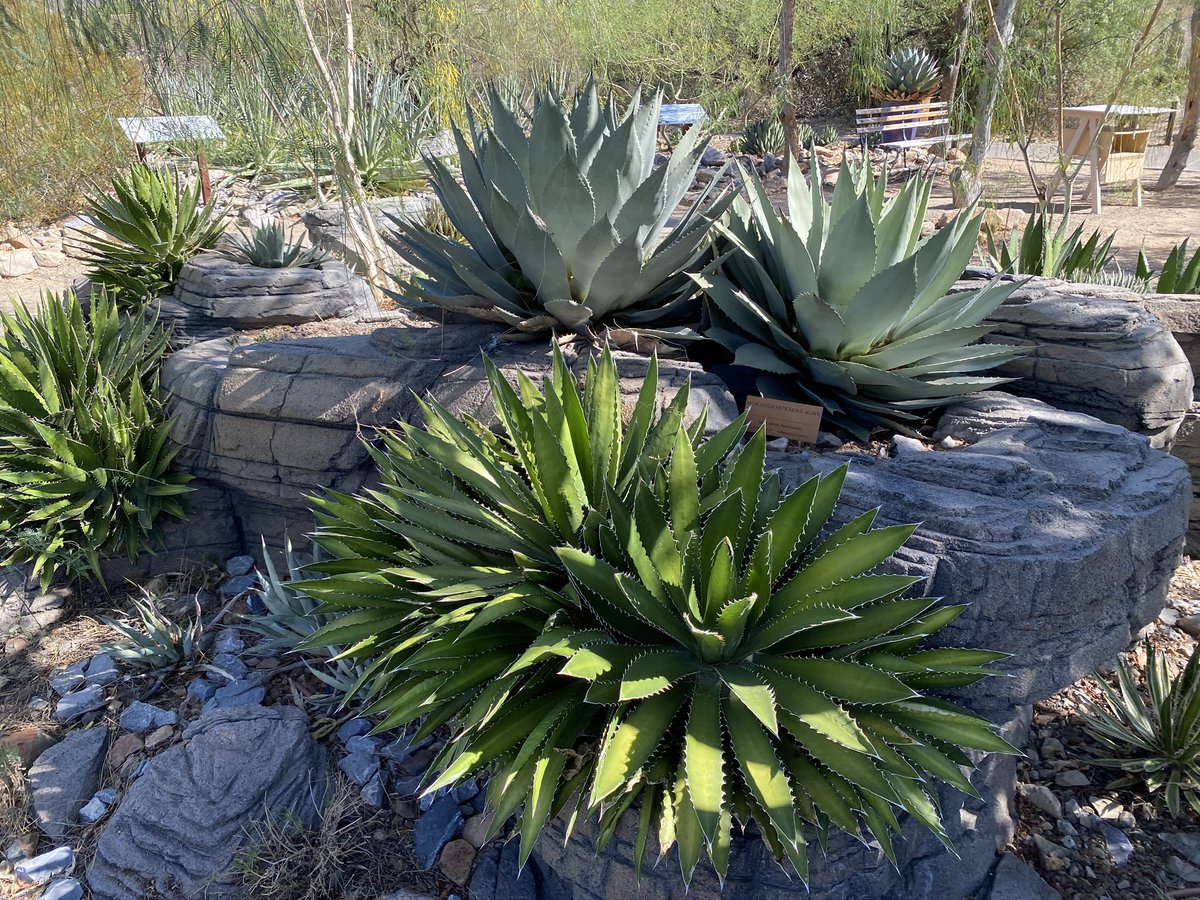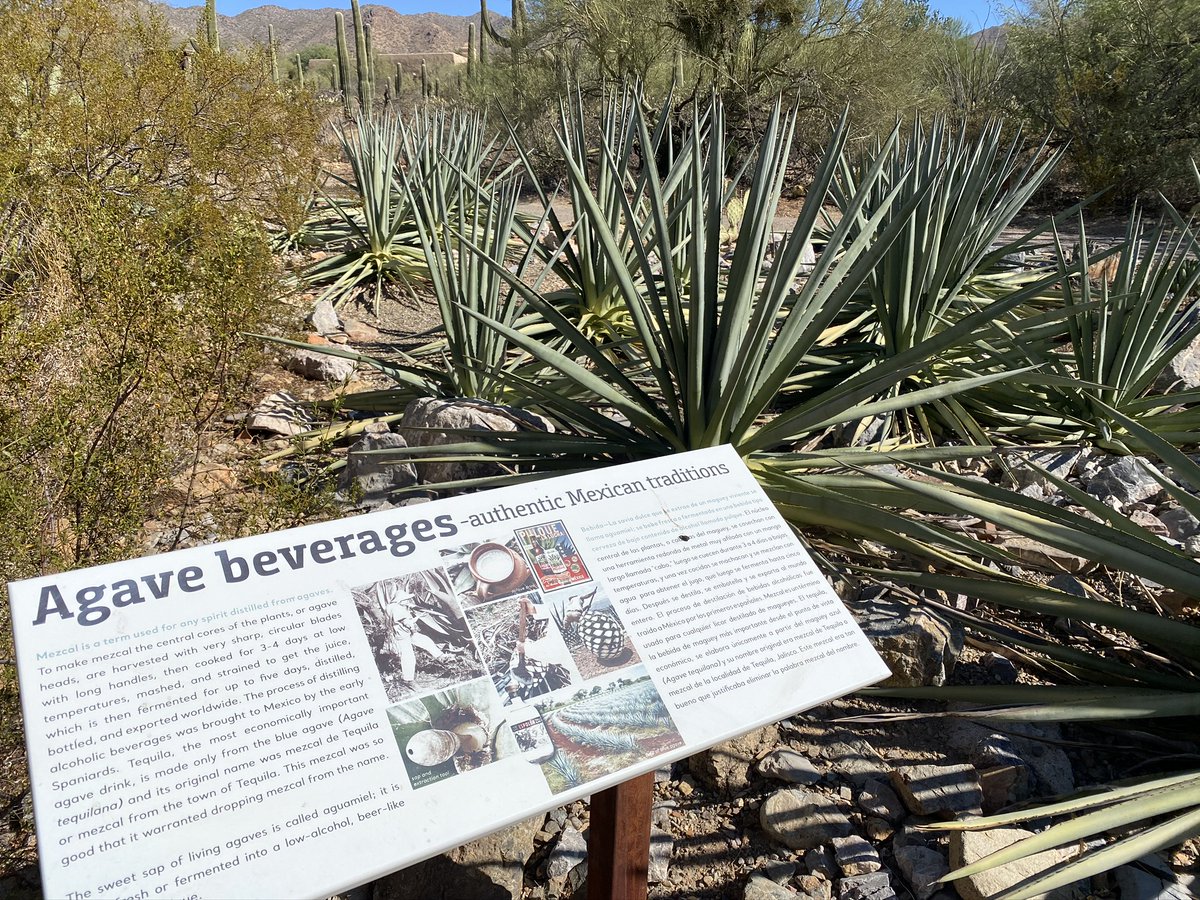I think we all need another #PlantHealthHappyHour! How about a classic margarita? A bit summer-y for the current season, but it gives me an excuse to tell you about another cool desert plant: agave!!  https://abs.twimg.com/emoji/v2/... draggable="false" alt="👇🏻" title="Rückhand Zeigefinger nach unten (heller Hautton)" aria-label="Emoji: Rückhand Zeigefinger nach unten (heller Hautton)">
https://abs.twimg.com/emoji/v2/... draggable="false" alt="👇🏻" title="Rückhand Zeigefinger nach unten (heller Hautton)" aria-label="Emoji: Rückhand Zeigefinger nach unten (heller Hautton)">
#IYPH2020
#IYPH2020
Not just for sitting on a beach, margaritas are also particularly good when it& #39;s late and you are somehow still staring at gene clusters.
I (well @MathMauney really) make margaritas with just lime juice, triple sec, and blanco tequila.
Plain and simple.
I (well @MathMauney really) make margaritas with just lime juice, triple sec, and blanco tequila.
Plain and simple.
The primary ingredient in a magarita is tequila, a distilled spirit made from agave (maguey) plants. Agaves are succulents in the Asparagaceae (yup, asparagus) family. This genus can be found in dry climates in North America, esp. Mexico.
Want to see the variety of agave plants? Take a virtual tour at the Arizona-Sonora Desert Museum agave garden! Notably, only a few species are used to make beverages like pulque and when distilled, mezcal and tequila.
https://arcgis.desertmuseum.org/agave.html ">https://arcgis.desertmuseum.org/agave.htm...
https://arcgis.desertmuseum.org/agave.html ">https://arcgis.desertmuseum.org/agave.htm...
Agaves have been cultivated for millenia by indigenous people for a variety of medicinal reasons, and to drink either as straight sap (aguamiel) or pulque - fermented sap with an alcohol level similar to beer.
https://ethnobotany.csusm.edu/search_details.php?plant_id=380">https://ethnobotany.csusm.edu/search_de...
https://ethnobotany.csusm.edu/search_details.php?plant_id=380">https://ethnobotany.csusm.edu/search_de...
Spanish colonization popularized distillation of native beverages like pulque, thus giving rise to mezcal - tequila is a specific mezcal.
Blanco/silver tequila is the direct product of distillation, while anejo and reposado tequila has been aged in wood taking on the gold color.
Blanco/silver tequila is the direct product of distillation, while anejo and reposado tequila has been aged in wood taking on the gold color.
The "heart" of the plant, or piña, is full of good starches and stugars that are intended to go towards the plant flowering.
So before flowering the piña is harvested, crushed to make aguamiel, fermented to make pulque, and distilled to make mezcal!
So before flowering the piña is harvested, crushed to make aguamiel, fermented to make pulque, and distilled to make mezcal!
The tricky thing is that agaves only flower once, at the end of their decade+ life. A tall stalk emerges that is pollinated by bats, hummingbirds, hawkmoths and/or bees!
Thus, catching each plant at the peak time for harvest requires an experience eye.
https://www.desertmuseum.org/books/nhsd_agave.php#:~:text=centuries%20or%20longer.-,Range,grasslands%20and%20oak%2Dpine%20woodlands.">https://www.desertmuseum.org/books/nhs...
Thus, catching each plant at the peak time for harvest requires an experience eye.
https://www.desertmuseum.org/books/nhsd_agave.php#:~:text=centuries%20or%20longer.-,Range,grasslands%20and%20oak%2Dpine%20woodlands.">https://www.desertmuseum.org/books/nhs...
Despite the genetic diversity of agaves, tequila is made only from one cultivar, Weber Azul, of one species, Agave tequilana. Furthermore, to be tequila from a trade standpoint, it also must come from the Mexican state of Jalisco (a few exceptions).
https://www.crt.org.mx/index.php/en ">https://www.crt.org.mx/index.php...
https://www.crt.org.mx/index.php/en ">https://www.crt.org.mx/index.php...
So a single cultivar in a single region?? That sounds like a crop ripe for pathogen problems. Diseases love lack of genetic diversity and close proximity!
Not surprisingly, fungal and bacterial diseases pose pretty big problems for blue agave grown for tequila.
Not surprisingly, fungal and bacterial diseases pose pretty big problems for blue agave grown for tequila.
Individual or combo diseases affecting 20-40% of tequila agave plants appear to be caused by Fusarium oxysporum (a great fungal wilter) and Erwinia caratavora (a great bacterial rotter), along with other fungi and bacteria.
https://link.springer.com/article/10.1023%2FB%3AEJPP.0000019791.81935.6d">https://link.springer.com/article/1... https://link.springer.com/article/10.1007/s10528-012-9559-4">https://link.springer.com/article/1...
https://link.springer.com/article/10.1023%2FB%3AEJPP.0000019791.81935.6d">https://link.springer.com/article/1... https://link.springer.com/article/10.1007/s10528-012-9559-4">https://link.springer.com/article/1...
Diseases like TMA (Tristeza y Muerte de Agave) caused huge problems in the late 1990s, spurring producers to make tequila with less than 100% agave sugar, though it has to >51% by law, which continues today because of high demand.
http://www.ianchadwick.com/tequila/shortage.htm">https://www.ianchadwick.com/tequila/s...
http://www.ianchadwick.com/tequila/shortage.htm">https://www.ianchadwick.com/tequila/s...
Because of the long growth cycle, disease pressure, & lack of breeding, agave has a pretty boom or bust pattern as evidenced by the "shortage of tequila" articles every few years. Add to that issues with labor and threats to bat conservation... it& #39;s a frankly sobering industry  https://abs.twimg.com/emoji/v2/... draggable="false" alt="🤔" title="Denkendes Gesicht" aria-label="Emoji: Denkendes Gesicht">
https://abs.twimg.com/emoji/v2/... draggable="false" alt="🤔" title="Denkendes Gesicht" aria-label="Emoji: Denkendes Gesicht">
There are new pushes for more ethical practices, both for employees and the environment. One push is to promote mezcal more broadly, since it is less limited in what agave it can be made from, leading to more breeding and genetic diversity. https://www.nrdc.org/onearth/help-bats-save-environment-drink-mezcal">https://www.nrdc.org/onearth/h...
So maybe this thread didn& #39;t end up as positively as one would think for one about margaritas. Nevertheless, that wraps up this edition of #PlantHealthHappyHour!

 Read on Twitter
Read on Twitter #IYPH2020" title="I think we all need another #PlantHealthHappyHour! How about a classic margarita? A bit summer-y for the current season, but it gives me an excuse to tell you about another cool desert plant: agave!! https://abs.twimg.com/emoji/v2/... draggable="false" alt="👇🏻" title="Rückhand Zeigefinger nach unten (heller Hautton)" aria-label="Emoji: Rückhand Zeigefinger nach unten (heller Hautton)"> #IYPH2020" class="img-responsive" style="max-width:100%;"/>
#IYPH2020" title="I think we all need another #PlantHealthHappyHour! How about a classic margarita? A bit summer-y for the current season, but it gives me an excuse to tell you about another cool desert plant: agave!! https://abs.twimg.com/emoji/v2/... draggable="false" alt="👇🏻" title="Rückhand Zeigefinger nach unten (heller Hautton)" aria-label="Emoji: Rückhand Zeigefinger nach unten (heller Hautton)"> #IYPH2020" class="img-responsive" style="max-width:100%;"/>





